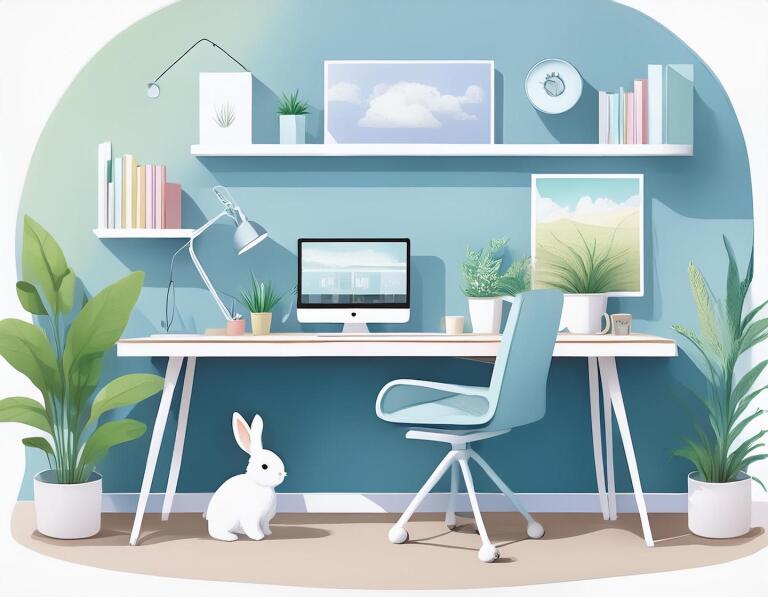In our Personal Experience Insights series, members of the Everspring Learning Design department share first-hand accounts of creating online learning content and meaningful takeaways from their professional experiences.
Sam Carlson is a Senior Instructional Designer on the Learning Design team at Everspring. He has 15+ years of experience designing learning environments in higher education and cyber security training. Sam has a master’s degree in adult education from Indiana University of Pennsylvania and resides in Pittsburgh, Pennsylvania.
Recording videos for students, coworkers, or a larger audience can appear to be a simple task. As an experienced instructional designer (someone with communications and adult education degrees, an audio and video production background, public speaking experience, etc.), I thought my experiences would have prepared me to easily record my own videos.
In my career, I’ve watched my fair share of instructional videos. I’ve even provided feedback on these videos. However, I haven’t spent much time recording my own instructional videos. This was the first time—in a long time—that I was the author of such content. My self-assured confidence quickly changed when I pressed the record button. I became flustered and agitated. Before I knew it, I was on my third or fourth attempt and making lots of errors. Intrusive thoughts were bombarding my mind. I knew the content. I knew what I wanted to say, but it wasn’t coming out.
I was well aware of my growing frustration, so I decided to center myself by doing the following:
- Taking a break from the recording and walking outside
- Eating a delicious but not-so-healthy snack (never underestimate the power of dark chocolate and sea salt caramels!)
- Venting to my colleagues (in the wrong Slack channel—like I said earlier, flustered and agitated)
Finally, I reflected on what I had done to prepare for my recording. And that’s when I realized I didn’t prepare. I just went for it with no real planning—which absolutely contradicts the recommendations I offer when consulting. The following mistakes led to my frustrations:
- Not having an outline to guide me and keep me on topic
- Stopping the recording every time I made a mistake (when I should have kept going)
- Worrying too much about my Pixburgh accent and not letting my personality shine
- Using the wrong tabs and struggling to locate the documents I wanted to showcase (because I hadn’t arranged the content on my screen before I pressed the record button)
I needed to revisit my own design philosophy, an approach deeply rooted in preplanning and preparation. I made an outline and identified my speaking points. I ignored my accent and kept talking even if I misspoke, and I organized my desktop for easy navigation. Then, once again, I hit the record button. At last, I had a take that was satisfactory. It wasn't perfect, but revisiting my own design philosophy vastly improved my video. After this experience, I became more empathetic to the challenges faculty face when recording videos. It prompted me to ponder how we as designers can help prepare faculty when they approach us about video recording. What words of encouragement, resources, feedback, etc. can we provide?
When faculty are working with instructional designers, a teaching assistant, a creative services team, or a video production team, the following questions should be asked to determine the best approaches for video recording:
- Is a video the best way to present this information to students? Sometimes video is the easiest way to deliver materials, but not the best. Perhaps on-screen text paired with interactive elements can streamline this information for students. Maybe an accessible step-by-step document is easier to update, revise, and keep relevant.
- How long will this video be? This should be considered to ensure the content presented is concise, meaningful, and relevant to objectives and assessments.
- What types of materials or resources are needed for this recording? Consider if a script is needed to stay on track or if an outline will be sufficient. Ensure any documents or resources being presented are copyedited, easy to read, accessible, and organized.
- How can I keep my content evergreen? Being evergreen means omitting details that are subject to change, such as textbook page numbers, specific days of the week, or module and assignment titles.
- Where will this video be recorded? Consider the recording environment and if an on-screen presence is necessary. Proper environments should be well-lit, quiet, and tidy, with sufficient recording equipment. If faculty wish to appear in the video, they should consider their attire and ensure professional delivery.
- When will this video be recorded? We all have busy schedules that juggle families, fun, and of course, work. Setting aside a dedicated time to prepare and record makes a difference. This preparation and time management promotes self-confidence when it's time to hit the record button.
Be sure to consider these questions before you start your next recording. After all, they are from an instructional designer who knows first-hand that no matter how confident you are, taking shortcuts when recording is not going to result in an impactful video. It will only result in personal frustration, unhealthy snacks, and a lackluster student experience.

